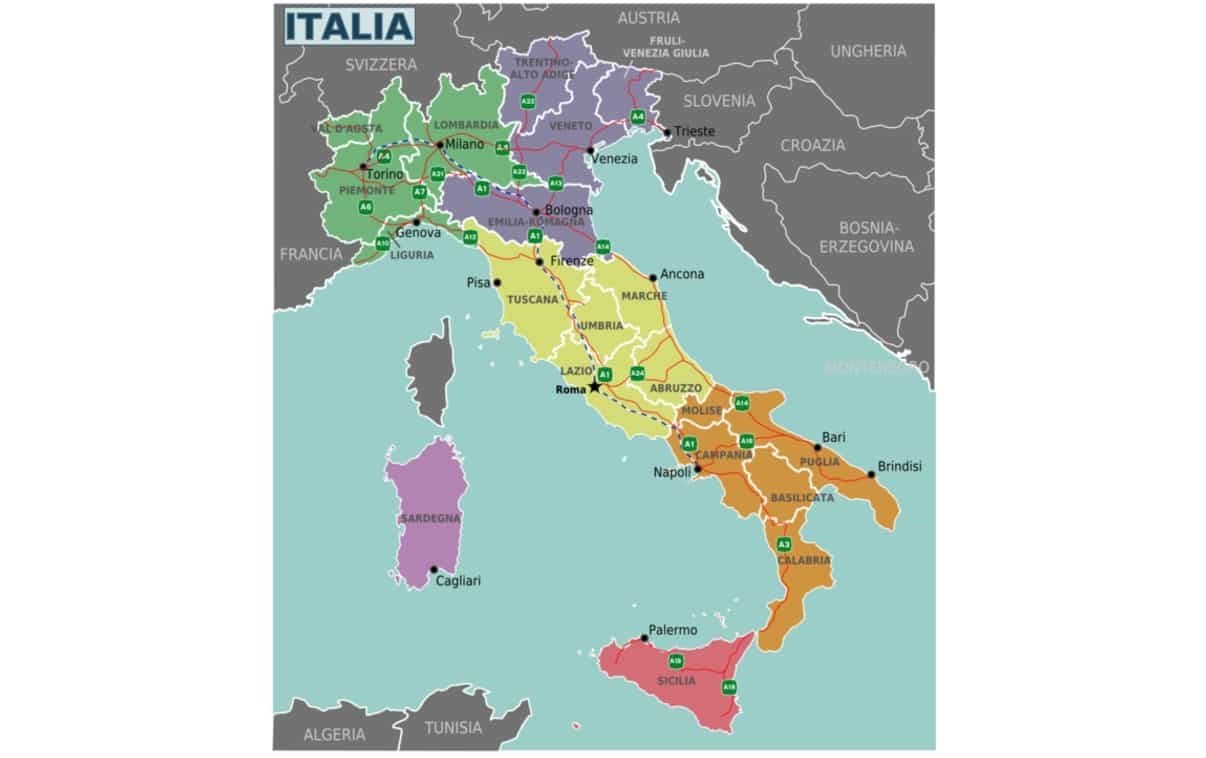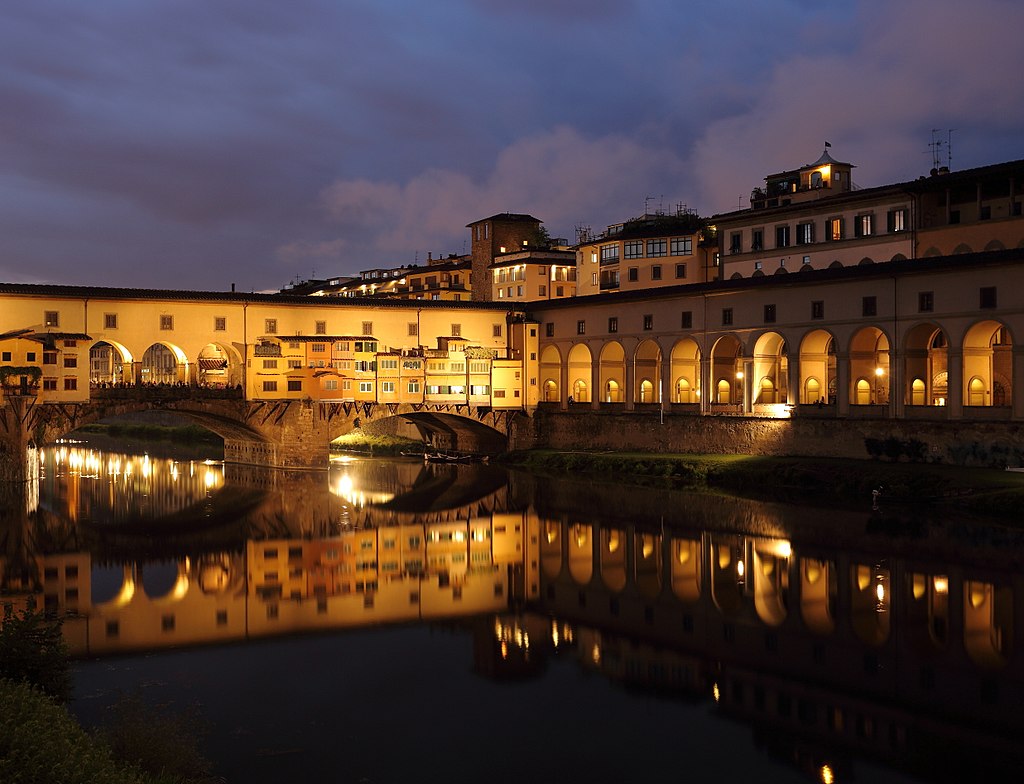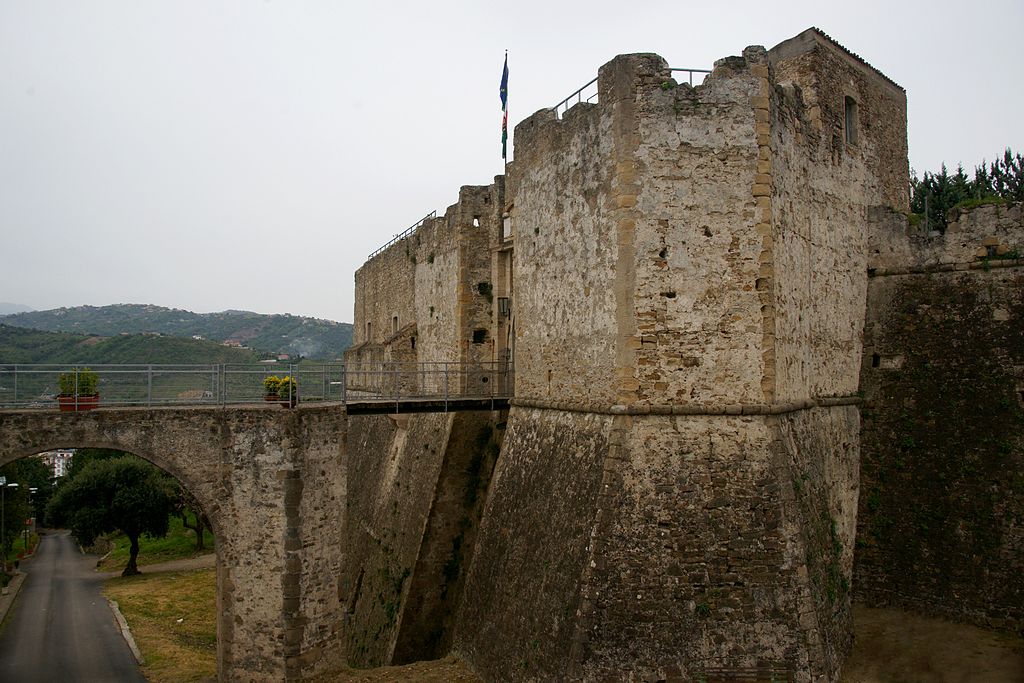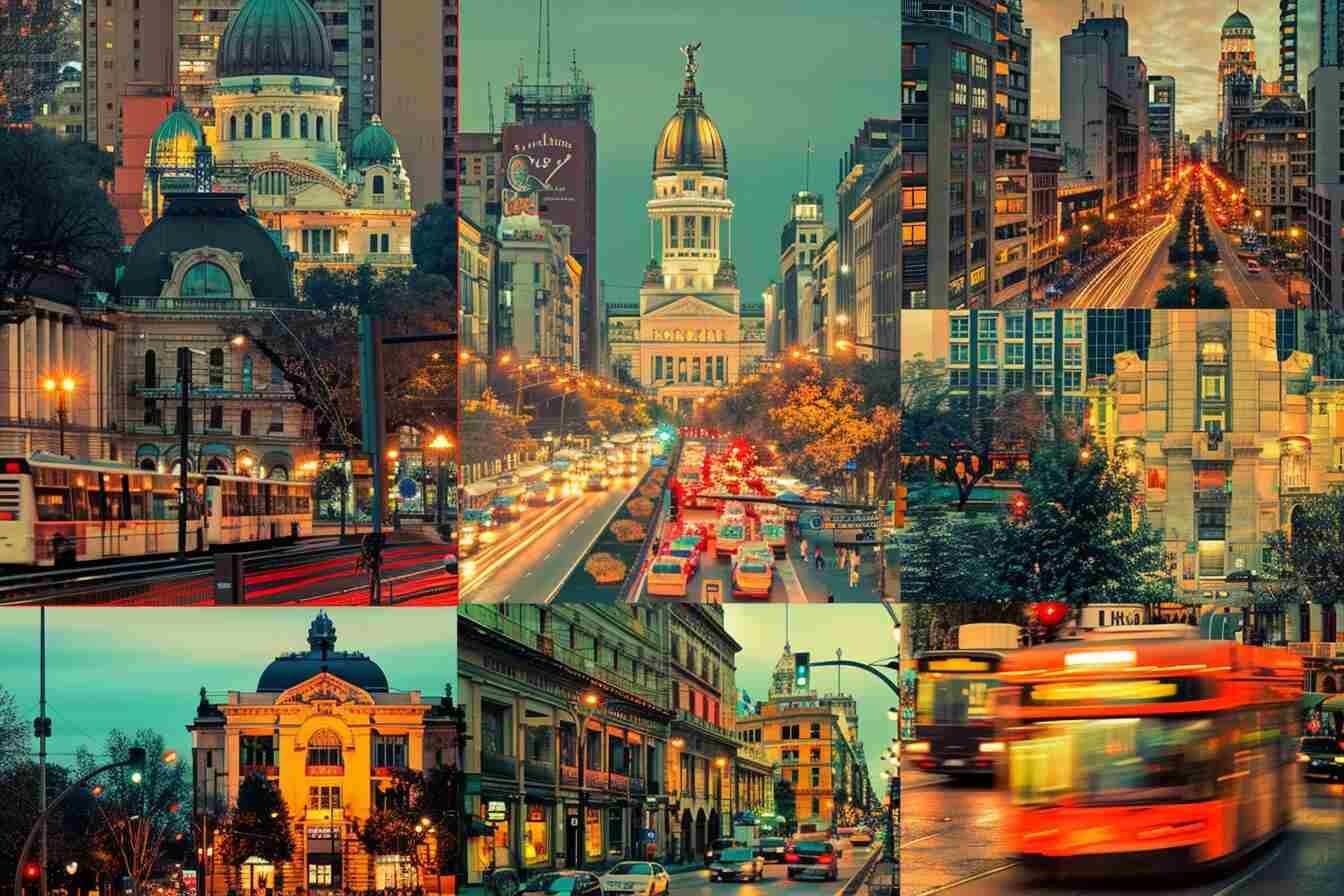Famous Cities in Italy
Many beautiful cities in Italy that you can visit. Italy often makes people dream with its diversity of landscapes, its monuments bearing witness to centuries of history and its artistic offer which includes the greatest masters of painting. Whether you want to discover its museums, admire its picturesque landscapes, taste its tasty cuisine or enjoy the dolce vita, you will necessarily find something to satisfy your desires for a stay as a couple or with your family. Here is our top 15 of the most beautiful Italian cities to discover absolutely
Below are the most beautiful cities to visit in Italy.
What are the most beautiful cities to visit in Italy?
The cities of Italy each have something different to offer, by the sea or inland, their gastronomy, their culture and their landscapes make the fame of each region. The train takes you to these Italian destinations quickly and comfortably, while respecting the environment and limiting your carbon footprint.
1. Rome, cradle of ancient Italy
2. Florence, cradle of the Renaissance
3. Unmissable Venice
4. Milan, university heart of Italy
5. Turin in Piedmont
6. Lecce, Baroque city
7. Bergamo in Lombardy
8. Naples and its centuries-old heritage
9. Mantua, UNESCO World Heritage Site
10. Siena in the heart of Tuscany
11. Pisa and its world famous tower
12. Ferrara and its walled enclosure
13. Treviso in Veneto
14. Bologna, the red city
15. Verona and its lovers
16. Agropoli, a beautiful Italian city dating back to the 6th century
17. Cinque Terre, five small fishing villages
18. Pompeii, for the historical dimension
19. Como, the beauty of the North with its lake
20. Positano, la dolce vita in Campania
21. Palermo, capital of Sicily
22. Catania is the second largest city in Sicily after Palermo
1. Rome, cradle of ancient Italy
An unmissable Italian destination, the capital with 2,000 fountains is the cradle of Italy, whose history dates back to Antiquity. Easy to reach by train from Paris, count around 14 hours by TGV INOUI, then on board a Trenitalia train with a connection in Milan. If you are already in Italy, you can easily reach the capital from Naples and Florence in just under 1.5 hours on Trenitalia’s Frecciarossa high-speed trains. These offer maximum comfort and high quality services (leather seats, free wifi, electrical outlets and dining car).
Read also: Mont Saint Michel, on the French Coast of Normandy
As soon as you arrive, discover the Colosseum and the Roman Forum for a leap into the past, without forgetting the magnificent Trevi Fountain on the square of the same name. Do not miss the Vatican and its Sistine Chapel, nor the Borghese Gallery with its incomparable collection of paintings and sculptures.
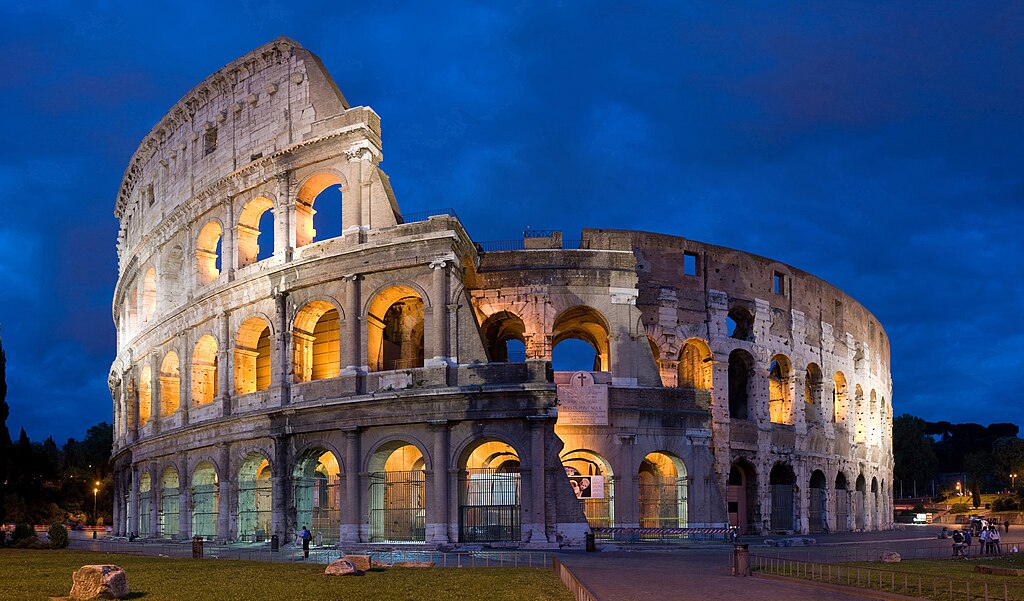
Colosseum in Rome. Diliff, CC BY-SA 2.5, via Wikimedia Commons.
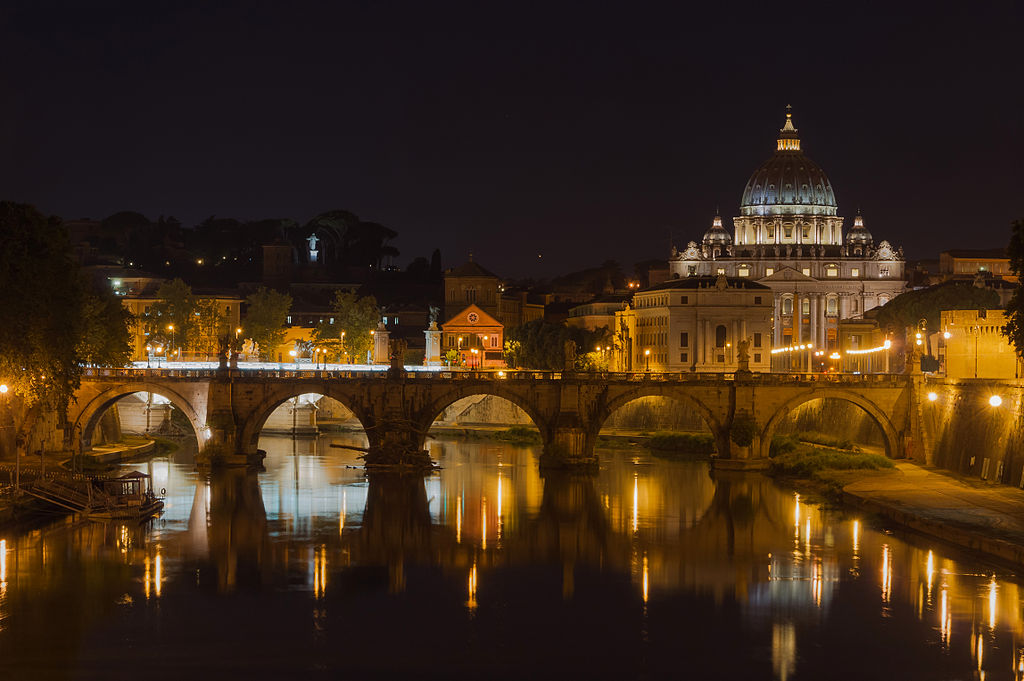
Saint Peter’s Basilica, Sant’Angelo bridge, by night, Rome. Jebulon, CC0, via Wikimedia Commons.

Trevi Fountain. NikonZ7II, CC BY-SA 4.0, via Wikimedia Commons.

Castel Sant’Angelo in Rome. Thomas Wolf, www.foto-tw.de, CC BY-SA 3.0 DE, via Wikimedia Commons.

Rome, Italy, Altare della Patria (Altar of the Nation) or Vittorio Emanuele II (Victor Emmanuel II). © Vyacheslav Argenberg / http://www.vascoplanet.com/, CC BY 4.0, via Wikimedia Commons.
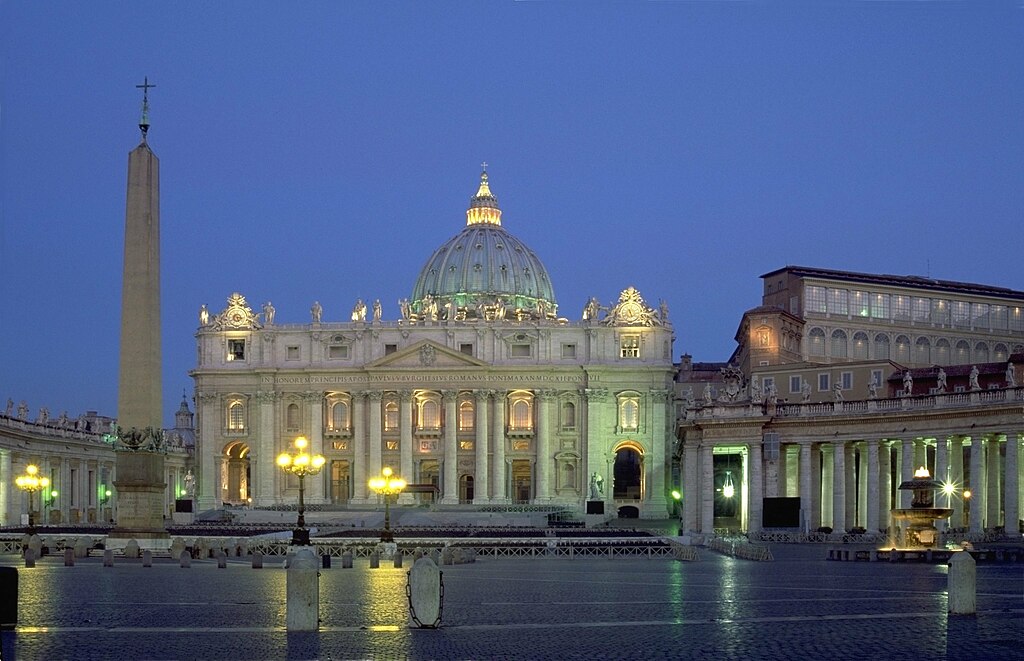
St Peters Basilica, Vatican. Andreas Tille, CC BY-SA 4.0, via Wikimedia Commons.
On the program of possible visits:
- The Coliseum.
- The Roman Forum.
- Saint Peter’s Basilica.
- Trevi Fountain.
- The pantheon.
- The Vatican Museums.
- The Sistine Chapel.
- The Villa Medici.
- St. Peter’s Square.
2. Florence, cradle of the Renaissance
A true treasure of Italy, beautiful Florence is the cradle of the Renaissance and a veritable open-air museum, 10 hours from Paris Gare de Lyon and only 1 hour from Rome. On site, admire the impressive and imposing Duomo and browse the Uffizi Gallery, the city’s art museum par excellence where you can admire the works of the great masters of Italian painting such as Botticelli, Raphael, Michelangelo, the Caravaggio and Da Vinci. And of course, don’t miss the famous Ponte Vecchio, the city’s medieval bridge which has the particularity of housing luxury boutiques and a pedestrian street.
Other places of wonder, such as:
- David statue,
- Santa Croce Basilica,
- The Boboli Garden,
- Giotto’s Campanile,
- The Chapel of the Medicis.
Ponte Vecchio, Florence. Martin Falbisoner, CC BY-SA 3.0, via Wikimedia Commons.

City of Florence. ElmoHoo, CC BY 3.0, via Wikimedia Commons.
2. Florence, cradle of the Renaissance
A true treasure of Italy, beautiful Florence is the cradle of the Renaissance and a veritable open-air museum, 10 hours from Paris Gare de Lyon and only 1 hour from Rome. On site, admire the impressive and imposing Duomo and browse the Uffizi Gallery, the city’s art museum par excellence where you can admire the works of the great masters of Italian painting such as Botticelli, Raphael, Michelangelo, the Caravaggio and Da Vinci. And of course, don’t miss the famous Ponte Vecchio, the city’s medieval bridge which has the particularity of housing luxury boutiques and a pedestrian street.
Other places of wonder, such as:
- David statue,
- Santa Croce Basilica,
- The Boboli Garden,
- Giotto’s Campanile,
- The Chapel of the Medicis.
3. Unmissable Venice, a floating city
A floating city with countless palaces, the legendary Venice is a bubble out of time. A journey of about 10 hours by train takes you there without incident from Paris Gare de Lyon with a stopover in Turin. Venice can boast of being the most beautiful city in Italy and even in Europe, with its canals which offer a real moment of serenity.

Saint Mark’s Campanile and Palazzo Ducale, Venice.Martin Falbisoner, CC BY-SA 4.0, via Wikimedia Commons.
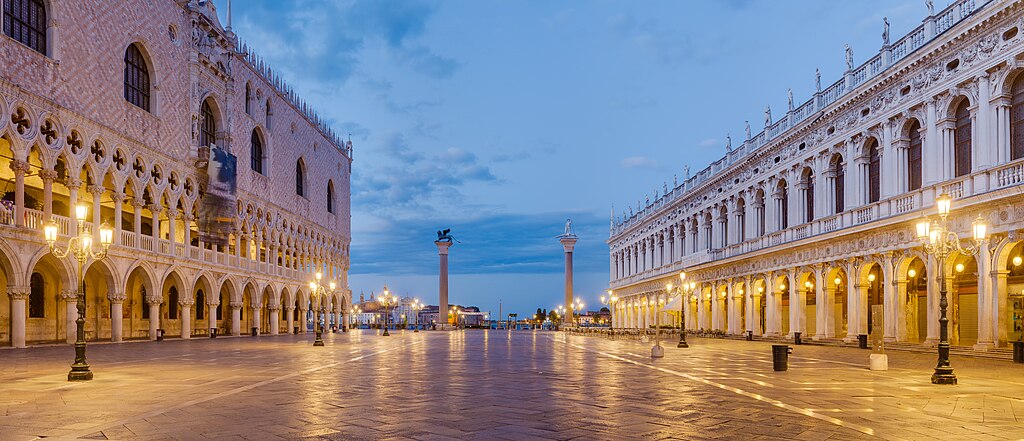
Piazzetta San Marco. Benh LIEU SONG, Public domain, via Wikimedia Commons.
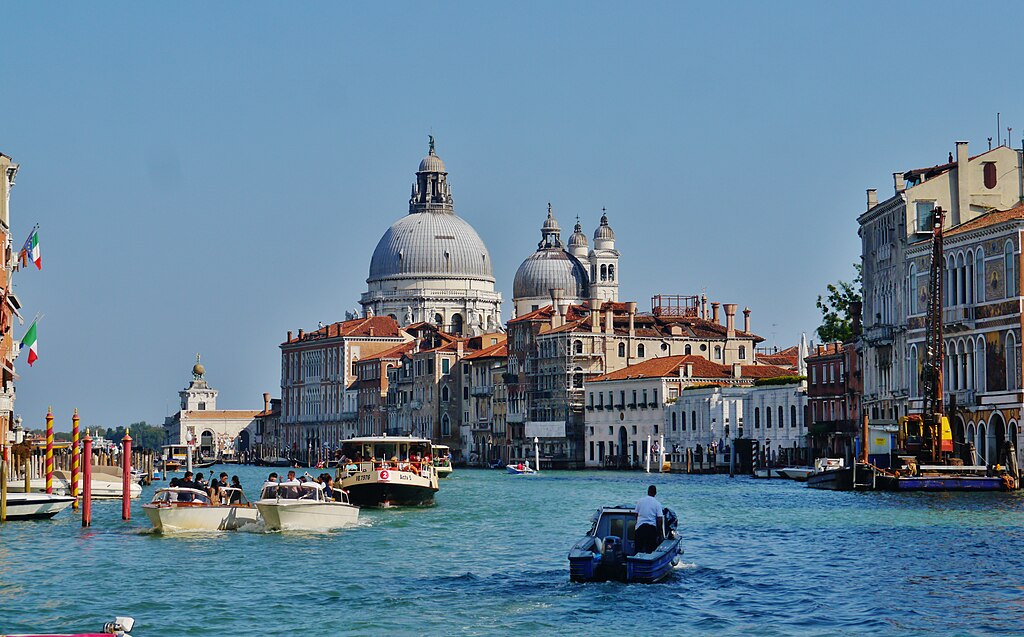
Grand canal. Zairon, CC BY-SA 4.0, via Wikimedia Commons.
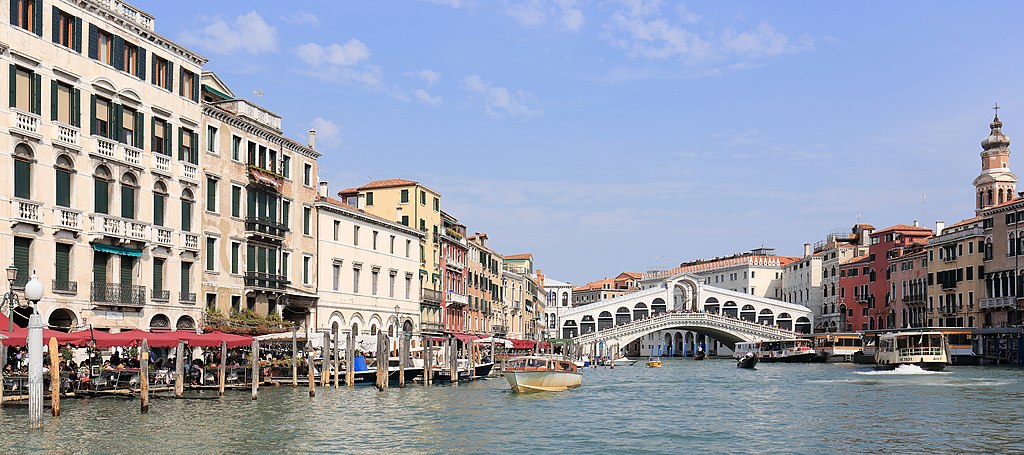
Grand canal and Rialto bridge. Martin Falbisoner, CC BY-SA 4.0, via Wikimedia Commons.

St Mark’s Basilica. Kasa Fue, CC BY-SA 4.0, via Wikimedia Commons.

Venice at night. Francisco Anzola, CC BY 3.0, via Wikimedia Commons.
Go and discover the (very) numerous palaces and enjoy a spectacular view of the Grand Canal at sunset. And then of course, Saint Mark’s Square and its basilica are not to be missed under any circumstances.
4. Milan, the university heart of Italy
In the very north of Italy, not far from the Alps, the beautiful Milan occupies a special place in the ranking of the most beautiful cities in Italy. To get there, allow about 7 hours 15 minutes from Gare de Lyon in Paris. Fashion capital and resolutely modern city, Milan will seduce you with its many monuments, including its famous Duomo, the name given to its Gothic cathedral, or its luxury shopping arcade Vittorio Emanuele II, classified as a historical monument.

Jakub Hałun, CC BY-SA 4.0, via Wikimedia Commons

Galeria V. Emanuele, Milan, Italy. Photo credit: l0da_ralta, CC BY 2.0, via Wikimedia Commons
Don’t forget to go to Santa Maria delle Grazie (Church in Milan, Italy) and visit the Last Supper painting! if you’re interested in the history of art and culture.
The Last Supper Painting by Leonardo da Vinci at Santa Maria delle Grazie (Milan)
While in Milan, also taste the Lombard cuisine of exceptional quality. In the evening, go to the La Scala theater to attend a performance of ballet, theater or even opera.
5. Turin in Piedmont
With the Alps as a backdrop, the city of Turin, in Piedmont, owes its reputation to its architectural richness and refinement. Barely more than 5 hours separate Paris from Turin, without change, or 1 hour and 40 minutes from Milan. Once there, walk along the main boulevards of the city lined with cafés, some of which date back to the 19th century, and sit down to enjoy a delicious cappuccino before continuing your visit.

Jeanne Griffin, CC BY-SA 4.0, via Wikimedia Commons
Stroll through the historic heart of the city where the Basilica of Saint John the Baptist stands, and visit the many museums including the Cinema Museum. Finally, Turin is also the Italian capital of chocolate, which you can taste in one of the many chocolate shops in the city.
6. Lecce, Baroque city
Probably the most charming city in the Puglia region of Italy, Lecce is renowned for its Baroque-style monuments, of which the Basilica of Santa Croce is a magnificent example.
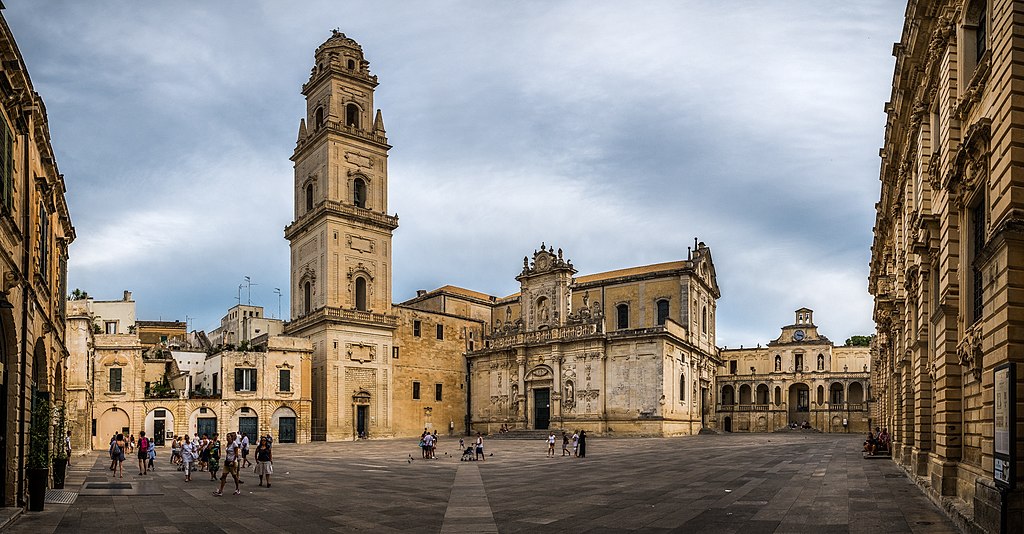
Piazza Del Duomo Lecce, Italy. Giuseppe Milo, CC BY 3.0, via Wikimedia Commons.
From there, reach Bari, a magnificent port city on the Adriatic in just 1 hour 40 minutes by train and set off to discover its treasures such as its 11th century cathedral or its immense sunny beaches to the north of the city.
7. Bergamo in Lombardy
To visit the pretty city of Bergamo in Lombardy, count a journey of about 50 minutes from Milan. The city owes its particularity to its old town built high up, accessible by funicular and surrounded by Venetian walls.

hozinja, CC BY 2.0, via Wikimedia Commons.
From there, you can admire the Duomo or the Romanesque basilica of Santa Maria Maggiore, as well as the sumptuous Colleoni chapel, whose frescoes date from the 13th century. Do not miss to admire the superb view of the high peaks of the neighboring Dolomites.
8. Naples and its centuries-old heritage
Coastal city of character, Naples brings together all the charm of southern Italy. From Tiburtina station in Rome, it takes about 1 hour 10 minutes. Overlooked in the distance by Vesuvius, its bay is the ideal place for a walk and to admire the view of the islands of Capri, Ischia and Procida.
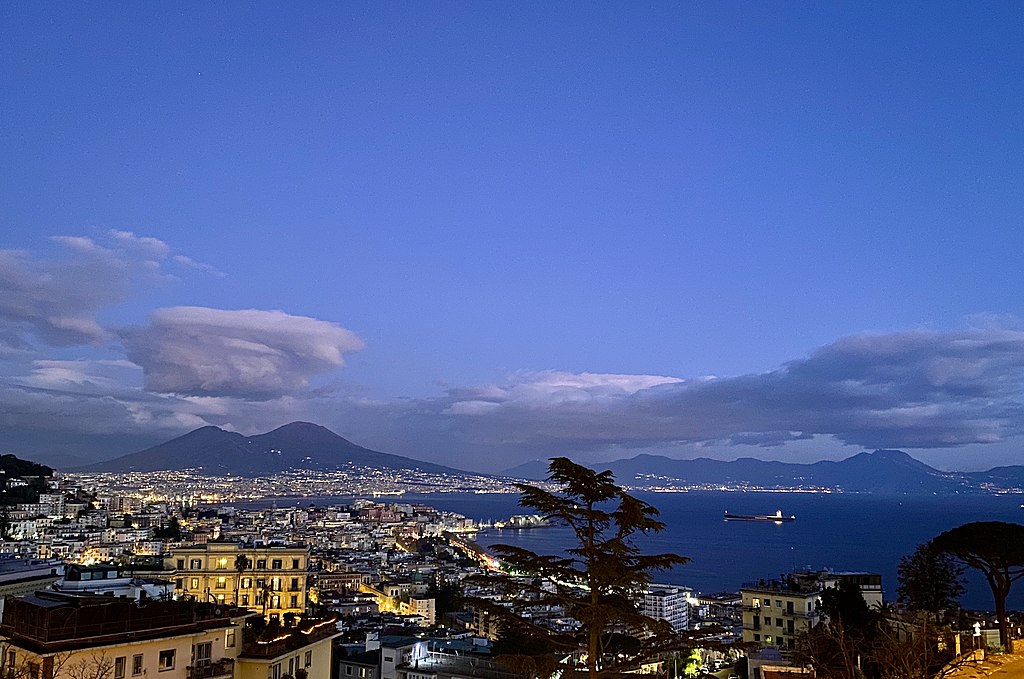
Napoli by night. Valeria1582, CC BY-SA 4.0, via Wikimedia Commons
Naples is also full of monuments dating from Antiquity to the Renaissance, and has a cultural heritage worthy of the name with its many churches and castles, such as Castel Nuovo. And then, impossible to pass by Naples, without tasting a good pizza, which are among the best in the country.
9. Mantua, UNESCO World Heritage Site
A pretty Renaissance city, the small town of Mantua is listed as a UNESCO World Heritage Site. Explore it by train from Milan Centrale (approximately 1 hour 55 minutes). Discover the Saint-André basilica, an imposing Renaissance-style monument, or the Teresiana library, whose reading room with huge wooden shelves is ideal for reading.

Aerial view of Mantua. User:EdoM, CC BY-SA 3.0, via Wikimedia Commons.
Mantua is also its Ducal Palace built over the ages and 900 rooms over 34,000 m²…! The city can also boast of having hosted the young Mozart for his first concert at the age of 14, in the Baroque theater Bibiena, which you will not miss to visit.
10. Siena in the heart of Tuscany
To reach beautiful Siena, it takes about 1 hour 30 minutes by train from Florence station. In the heart of Tuscany, the city of brick monuments is a true medieval gem.

Piazza del Campo with Palazzo Pubblico and Torre del Mangia, town of Siena, Tuscany/Italy. I, Manfred Heyde, CC BY-SA 3.0, via Wikimedia Commons.
Head to Piazza del Campo, the city’s main square with its unique sloping floor.
Duomo in Siena. Martin Stiburek, CC BY-SA 4.0, via Wikimedia Commons.
Every year in July, it is possible to attend the Palio, a popular horse race that attracts crowds. Take the opportunity to climb to the top of the Torre del Mangia to enjoy a unique view of the city. Siena Cathedral is also a must: built in the 13th century, it is decorated with blocks of white marble and green and black bands representing the colors of the city.
11. Pisa and its world famous tower
Easily accessible by train in 1 hour from Florence Santa Maria Novella, Pisa is a must see. Famous for its leaning tower, a true symbol of the city, it also conceals many treasures. Head to Piazza Dei Miracoli which brings together all the monuments of the city in addition to the Tower of Pisa, including the Cathedral of Our Lady of the Assumption and the Baptistery of Saint John of Pisa. Then, to complete your visit, go to the Borgo Stretto district to enjoy a good ice cream or discover its shops.

Leaning Tower of Pisa. Joseolgon, CC BY-SA 4.0, via Wikimedia Commons
Young and friendly city, Pisa has a dolce vita atmosphere and offers many visits:
- The tower of Pisa.
- Piazza di Miracoli.
- The Duomo of Pisa (cathedral).
- The Baptistery of Pisa.
- Pisa Cemetery.
- The Church of Santa Maria della Spina.
12. Ferrara and its walled enclosure
Another superb Italian city, listed as a UNESCO World Heritage Site, Ferrara has one of the most beautiful fortified enclosures in the Emilia-Romagna region, about 50 kilometers (31 miles) from Bologna. Nestled in the hollow of the Po delta, the city as we know it dates from the 14th century. Explore it from Venice in just 1 hour 30 minutes.

Side shot of the Cathedral of San Giorgio in Ferrara with a perspective from the Piazza delle Erbe. GiorgiaAprea, CC BY-SA 4.0, via Wikimedia Commons.

Ferrara walls bastion. https://www.flickr.com/photos/helios89/, CC BY-SA 2.0, via Wikimedia Commons.
When visiting Ferrara, stroll through its medieval historic heart with its cathedral and remarkable Estense Castle. Overlooking the city, it belonged to the great family of the same name which reigned over Ferrara from the 9th century until the end of the 16th century.
13. Treviso in Veneto
A small town in Veneto, Treviso attracts visitors for its charm and tranquillity. It takes around 30 minutes by train from Venice. As soon as you arrive, don’t waste a second and set off to discover Treviso, starting with the Place des Seigneurs, located in the center.

Cittadella Porta Treviso Padova, Veneto. Zairon, CC BY-SA 4.0, via Wikimedia Commons
You will notice the Venetian architectural style of the city at the turn of its monuments. Then go and see its cathedral with its five remarkable domes, or even the historic and quiet pedestrian area of “La Passagietta lungo la reste” with its unmistakable air of Venice.
14. Bologna, the red city
It is very easy to get to Bologna from Florence Santa Maria Novella by train (allow about 40 minutes). Capital of Emilia-Romagna, Bologna is nicknamed the red city for the color of its brick monuments. Its medieval historic heart is sumptuous with its Piazza Maggiore, considered one of the most beautiful squares in Italy, its palace and its San Petronio basilica.

View from the top of the Basilica di San Petronio in. In the foreground – Sanctuary of Santa Maria della Vita, to the right two inclined towers – Garisenda and degli Asinelli, more to the right – Chiesa dei Santi Bartolomeo e Gaetano. Ввласенко, CC BY-SA 3.0, via Wikimedia Commons.

Piazza Maggiore. Vanni Lazzari, CC BY-SA 4.0, via Wikimedia Commons.

Fountain of Neptune. Library of Bologna. Palazzo dei Banchi palace in Piazza Maggiore square in Bologna. The Basilique San Petronio and Piazza Maggiore. collection by DanieleDF1995 (d), CC BY-SA 3.0, via Wikimedia Commons
Nearby, don’t forget to visit the city’s oldest university, the Renaissance-style Palazzo dell’Archiginnasio. And above all, do not leave Bologna without having tasted the local specialties reputed to be the best in Italy.
15. Verona and its lovers
A romantic city par excellence, Verona can be reached by train from Milan Centrale, in just 1 hour 15 minutes on board a Frecciarossa train. Its medieval old town, a stone’s throw from the station, is bordered by the Adige.
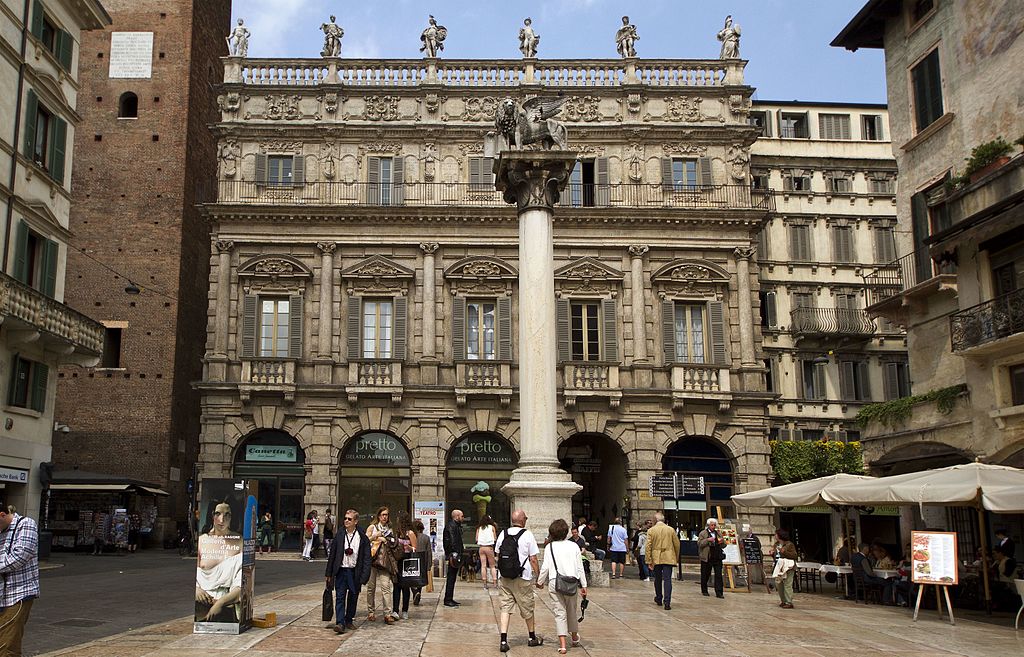
Verona, province of Italy. trolvag, CC BY-SA 3.0, via Wikimedia Commons.
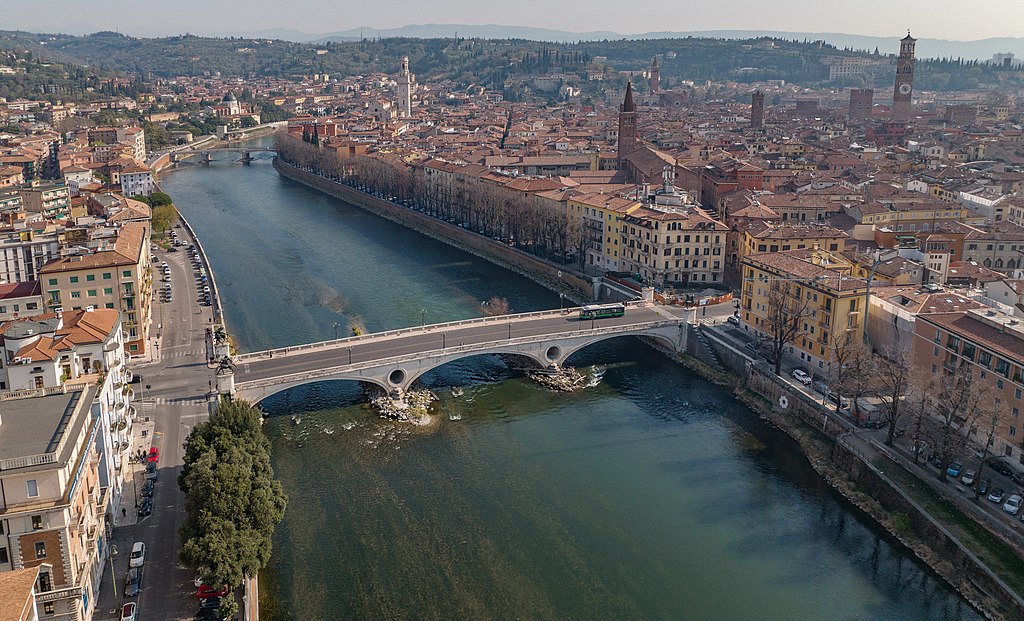
Ponte della Vittoria (Victory Bridge). Arne Müseler / www.arne-mueseler.com, CC BY-SA 3.0 DE, via Wikimedia Commons.
Stroll through this beautiful Italian city, listed as a UNESCO World Heritage Site, and follow in the footsteps of Shakespeare and his work Romeo and Juliet. You can see Juliet’s balcony at the bottom of a small 14th century residence. From the top of its 2,000 years of history, the city is a veritable open-air museum, as are its ancient arenas, built in 30s.
16. Agropoli, a beautiful Italian city dating back to the 6th century
The history of this friendly little Italian town began in the 6th century, when the Aragonovu family ruled this ancient town. During its history it suffered many times the invasions of pirates, who wanted to make it as their base. Today of those times reminds one of the main architectural monuments – ancient gates.
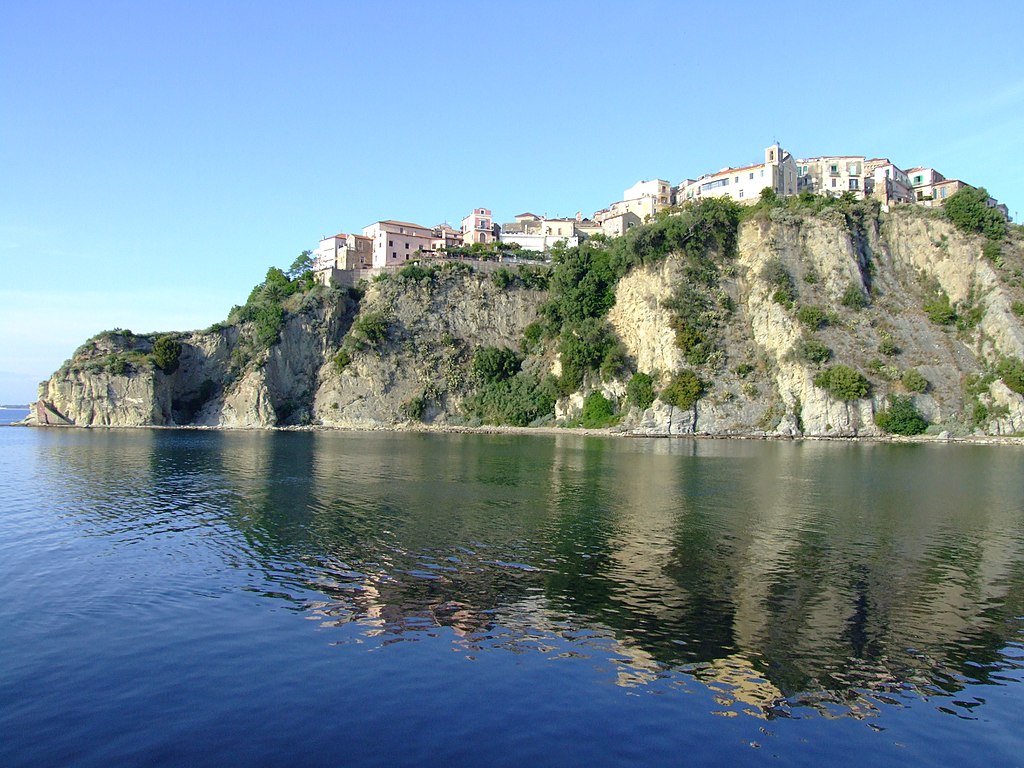
Agropolis. Mujaidin, CC BY-SA 3.0, via Wikimedia Commons
The main historical site of the city is considered to be the Aragonese Castle, which was built in the 15th century; to study all its features will take more than a day. It is located at the top of the hill; to reach the fort, one must first overcome a long path of stairs. A large number of curious surprises await travelers, because not only can they freely walk around the surroundings, but also evaluate the collection of various art objects inside.
Agropoli castle. Mboesch, CC BY-SA 3.0, via Wikimedia Commons
Often there are interesting cultural events on the site, for example, one can come for a rock concert, or even for a classical music event. The scenic historic location is ideal for walks, and there are numerous observation decks from which tourists enjoy snapping photos of the coast and watching the sunset.
17. Cinque Terre, five small fishing villages
Technically, it is not a single city but a national park located in northern Italy that is home to five small fishing villages, perched along a steep coastline.
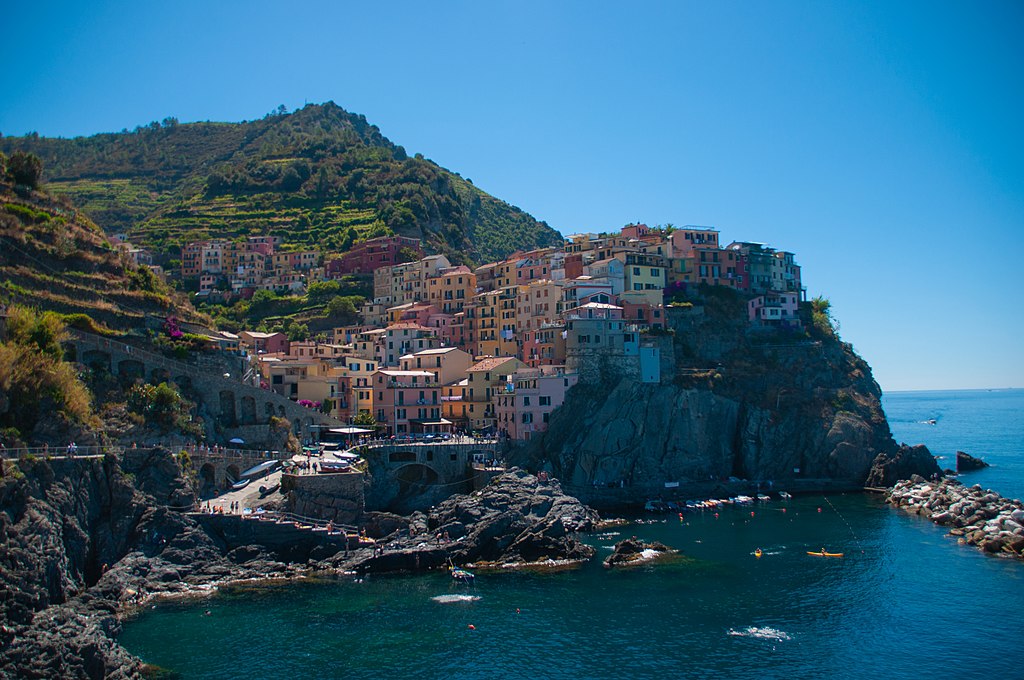
Vald0506, CC BY 4.0, via Wikimedia Commons
The five villages are from north to south: Monterosso (the largest), Vernazza, Corniglia, Manarola and Riomaggiore. Here you can see some of the most beautiful landscapes of the Italian coasts, with steep cliffs overlooking the Mediterranean and terraces of vineyards and olive trees.
There are three ways to explore Cinque Terre: by train, the Cinque Terre line connects the five towns together. You can also explore the coast by kayak or take a ferry trip (there are day passes). Otherwise, easily accessible hiking trails connect the villages through spectacular scenery. The best way to explore the place is to choose one of the five towns as a base and take day trips to visit the others. The ideal is to spend two or three days there, out of season to avoid the hordes of tourists.
18. Pompeii, for the historical dimension
You have certainly already heard of Pompeii, the famous Latin city tragically famous following the eruption of Vesuvius, which led to the death of many Romans in the year 79 BC. Today, Pompeii is one of the most visited historical sites in the world, part of the UNESCO World Heritage Site.
You have certainly already heard of Pompeii, the famous Latin city tragically famous following the eruption of Vesuvius, which led to the death of many Romans in the year 79 BC. Today, Pompeii is one of the most visited historical sites in the world, part of the UNESCO World Heritage Site.

Gary Todd from Xinzheng, China, PDM-owner, via Wikimedia Commons
The ruins of Pompeii consists of several interesting sites, such as:
- The main Etruscan and Greek ruins,
- The Forum of Pompeya (in Latin and in ancient Rome, a forum corresponds to a public place),
- The exhibition of the last inhabitants of Pompeii,
- The thermal baths of the forum,
- The House of the Tragic Poet,
- The Basilica of Pompeii,
- The Magic Villa of Pompeii,
- Madonna’s Sanctuary.
The visit to the exhibition of the last inhabitants of Pompeii is impressive: these are (real) casts of the bodies of the unfortunates surprised during the eruption of the volcano. The mixture of dust, ash and lava made it possible to find these inhabitants, which is quite destabilizing.
Also, from Pompeii you can go by boat for a day trip to Capri!
A tip if you visit Pompeii: take a tourist guide in French or take part in an excursion. Roman history is so fascinating that it would be a shame to miss a beat! Count between 20 and 40 euros per person for this.
Walking around Pompeii has a historical character, both fascinating and a little special: it’s a unique experience to live!
19. Como, the beauty of the North with its lake
If you like the spirit of nature, then you will love the city of Como, located on the edge of the eponymous lake, famous throughout the world. Located in Lombardy, the city of Como is known for its promenade along the lake and its funicular up to Brunate leading to an altitude of 715 meters (2345 ft) and offering breathtaking panoramic views. It is a city very popular with families and couples.
Did you know that Lake Como is one of the largest bodies of natural water and one of the largest Italian lakes, being 418 meters (1371 ft) deep?

Bellagio and mountains from Lake Como. Daniel Case, CC BY-SA 3.0, via Wikimedia Commons.
Whether you like to walk or simply stroll, Como is a perfect city for it. The main places of interest are either architectural, religious or civil:
- La Villa Ormo, a lakeside house offering exhibitions,
- The Gothic-inspired Cathedral of Como, recognizable by its typical blue-green roof,
- The Temple of Volta, a scientific temple,
- The Basilica of Sant’Abbondio,
- The Broletto of Como, an ancient municipality,
- The Porta Torre,
- The Giovio Archaeological Museum,
- Baradello Castle, which overlooks the city of Como,
- Without forgetting of course the marina of the city.
If you prefer to walk for hours to admire the surroundings, take the Path of Knowledge, to the botanical garden. Monte Bisbino is another meeting place for hikers, but you have to be prepared to climb a few kilometres! If you like architecture, take a leisurely stroll along the lake and observe the old buildings, including:
- Villa Bernasconi.
- Villa Carlotta.
- Villa Balbianello.
- Villa L’Oleandra.
- Palazzo Rusca.
Not to mention that Como is a very dynamic city: many local markets take place throughout the year with sales of specialties and regional products, such as risotto or Lombard charcuterie.
This is a magnificent city and region where you can take a breath of fresh air before continuing your Italian journey!
We could also have told you about other tourist places such as the Calabria region, the city of Lecce in Puglia, the Dolomites massif (classified by UNESCO), the cities of Bologna, Trieste or Ravenna and of course the island of Sicily with Mount Etna. There are so many things to see in Italy!
Did that make you want to go to Italy? If so, organize your stay now thanks to Superprof by finding out about the country or by taking Italian language lessons with a teacher to make the most of the trip!
Etna Volcano and Summit Craters | UNESCO World Heritage | How to visit Etna?
20. Positano, la dolce vita in Campania
If you are looking for an Italian city with many assets, Positano will answer in the positive: located by the sea, this typical and authentic village of the Amalfi Coast is full of charm.
Indeed, the city is located on the side of a cliff, which gives it its intimate side, perfect for couples in love. Its banks of beaches, as idyllic as they are uncrowded, are other important points on the list of qualities of this city. The best known are Spiaggia Grande and Spiaggia del Fornillo.
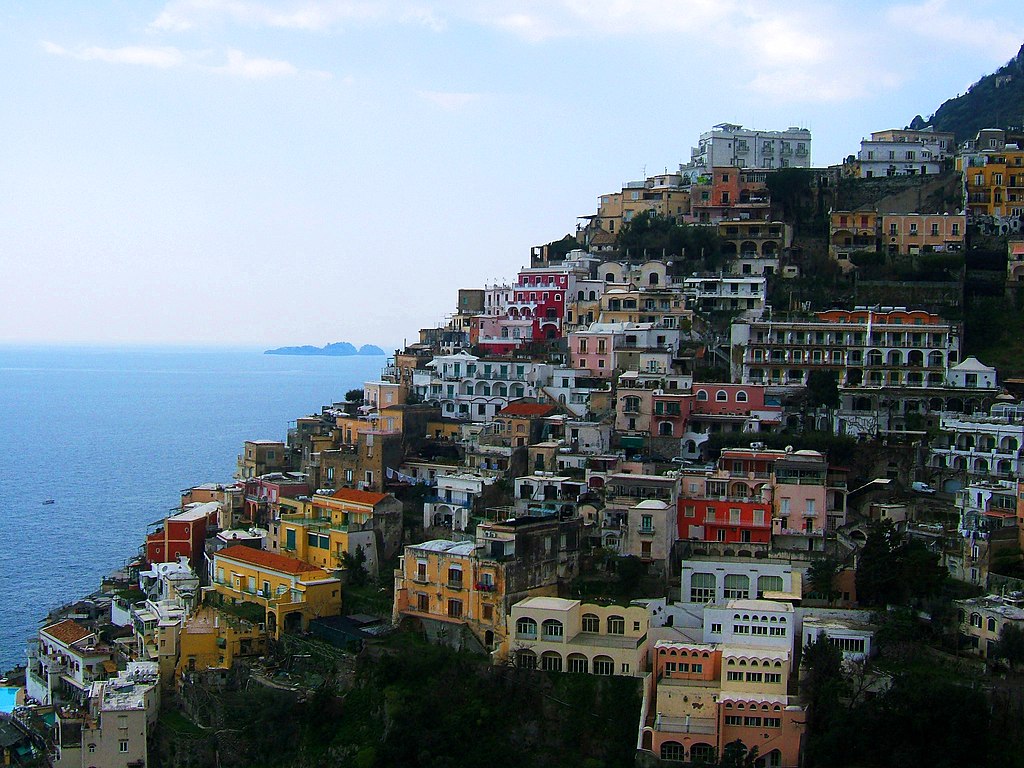
Stepanie Costa, CC BY 2.0, via Wikimedia Commons
In addition to the seaside and relaxation aspect, there are several small typical alleys where shops, cafes and restaurants are nestled. This is an opportunity to go and taste a homemade Italian ice cream, or a salad with the famous Mozzarella di Campana, made in the region.
Did you know? Positano has no legend except its seaside resort: its name would come from Neptune, the God of the Sea, who would have founded this city out of love for a nymph.
You thought there is not much to visit? Fake ! Positano is located in a protected region, suitable for hiking and walking, but also offers some cultural and historical monuments, such as:
- The Palais Murat dating from the 17th century, now a luxury hotel.
- The Santa Maria Assunta church, founded in the 11th century and rebuilt during the Renaissance.
- San Pietro Chapel.
- Old art galleries.
Do not miss the Sentiero degli Dei path for a hike of a few hours surrounded by nature, or have a coffee with a panoramic view of the entire cliff!
Positano is the very city for an Italian getaway, in a spirit of dolce vita!
Italy has a crazy charm and each of its beautiful cities in Italy has so many surprises to offer its visitors. Whether you are traveling as a couple or with the family, you are bound to find the perfect destination, whether in the hilly regions of Tuscany or Emilia-Romagna, or even further south in sunny Naples or Puglia. Decided to discover Italy and its wonders?
21. Palermo, capital of Sicily
Located in the northwest of Sicily, the municipality of Palermo is the capital and the largest city of the island. It suffers from a bad reputation linked to poverty and the mafia, but it has been able to renew itself and now offers a quality tourist welcome.
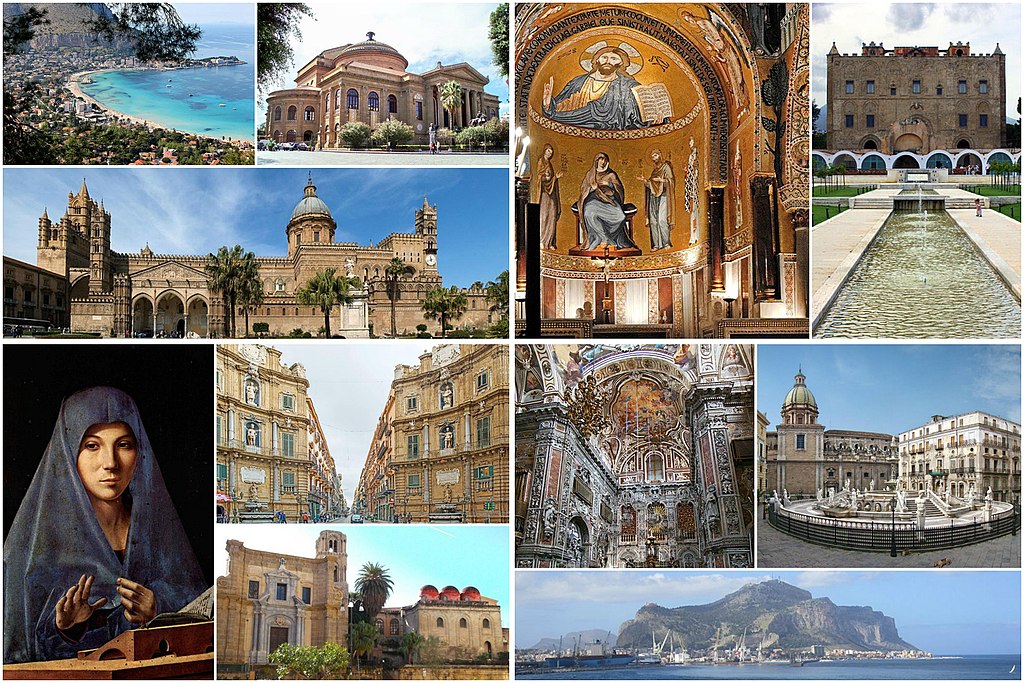
Montage of Palermo. List of images: Mondello, Teatro Massimo, Cappella Palatina, La Zisa, Palermo Cathedral, Virgin Annunciate of Antonello da Messina (Palazzo Abatellis), Quattro Canti, Church of Santa Caterina, Piazza Pretoria, La Martorana and San Cataldo, Monte Pellegrino. Waldgang, CC BY-SA 4.0, via Wikimedia Commons
It is a city of history with majestic palaces, beautiful churches, including the Palatine Chapel. Strolls through its narrow streets reveal historical surprises at every street corner, before tasting Italian specialties in one of the many restaurants in the city. Finally, why not try a boat trip to enjoy the superb landscapes of the Mediterranean?
Palermo is a center of culture whose many museums contribute to its influence.
• Palazzo Abatellis (15th century) houses the Regional Gallery of Sicily (carved wood, Arab vases, sculptures, Sicilian painting from the 12th to the 16th century, works by Antonello da Messina including The Annunciation, Gothic crucifixes, etc.)
• Antonio Salinas Regional Archaeological Museum
• Sant’Anna Modern Art Gallery (GAM)
• Ignazio Mormino Museum of Art and Archeology
• Sicilian Ethnographic Museum Giuseppe Pitrè
• Antonio Pasqualino International Puppet Museum
• Palazzo Riso, Museum of Contemporary Art of Sicily
The “old Palermo”, in the heart of the city, is one of the largest in Europe (240 hectares or 593 acres), and contains more than 500 monuments between palaces, churches, convents, monasteries and seven theatres.
22. Catania is the second largest city in Sicily after Palermo
Catania has 400,000 inhabitants and with the suburbs it can reach 800,000 people.
Located on the slopes of the Etna volcano, Catania, throughout its history, has been able to adapt to the different natural disasters that have shaped the architecture of the city. It has been destroyed seven times by volcano eruptions and earthquakes. The eruption of 1169 and 1693 destroyed the city, Catania was rebuilt according to the architectural style of the time, the Baroque.
In 2002 Catania was declared a World Heritage Site by UNESCO and currently many of its monuments are being restored to their original splendour. The city dates back to 730 BC, when Greek settlers first arrived and founded Katania there, marking the beginning of a long chain of invasions and conquests.
Panoramic view of Catania Etna Volcanos Sicilia Italy. Castielli, CC BY-SA 3.0, via Wikimedia Commons
Later arrived in Catania, the Byzantines the Normans, the Arabs, the Aragonese, the Spaniards and the Bourbons to conquer these lands leaving footprints that still remain in the collective memory and which opened the way to the meeting and the fusion of different cultures that have forged the somatic and distinctive traits of the Catanians.
Seat of the first Sicilian university, founded in 1434 by Alfonso V of Aragon, Catania has a strong cultural tradition, with cultural clubs that promote university studies in all fields.

Catania – Piazza Duomo. Leandro Neumann Ciuffo, CC BY 2.0, via Wikimedia Commons
Visits not to be missed: Piazza Duomo, directly opposite there is the Town Hall, and the Cathedral of Catania, the Duomo, near which there is the famous Elephant Fountain by Vaccarini. The very picturesque fish market and the fair market, the theater and the Roman amphitheater, the Odeon, the Rue Crucifère (18th century) lined with beautiful Baroque churches, the Bellini park, the Massimo Theater named after the famous composer Vincenzo Bellini of Catania, Etnea street, the avenue of shopping, ice cream parlors and walks, the Saint Nicolas church and the Benedictine monastery (today University), without forgetting the many Baroque palaces and the Ursino Castle.
http://cleverlysmart.com/europe-travel-guide-book-bucket-list-ideas-and-places-to-visit-north-south-east-west/
Sources: PinterPandai, U.S. News, Hand Luggage Only, Earth Trekkers, Trip Savvy, Full Suitcase, Worldpackers
Photo credit (main picture): Ciaurlec (CC BY-SA 3.0) via Wikimedia Commons
